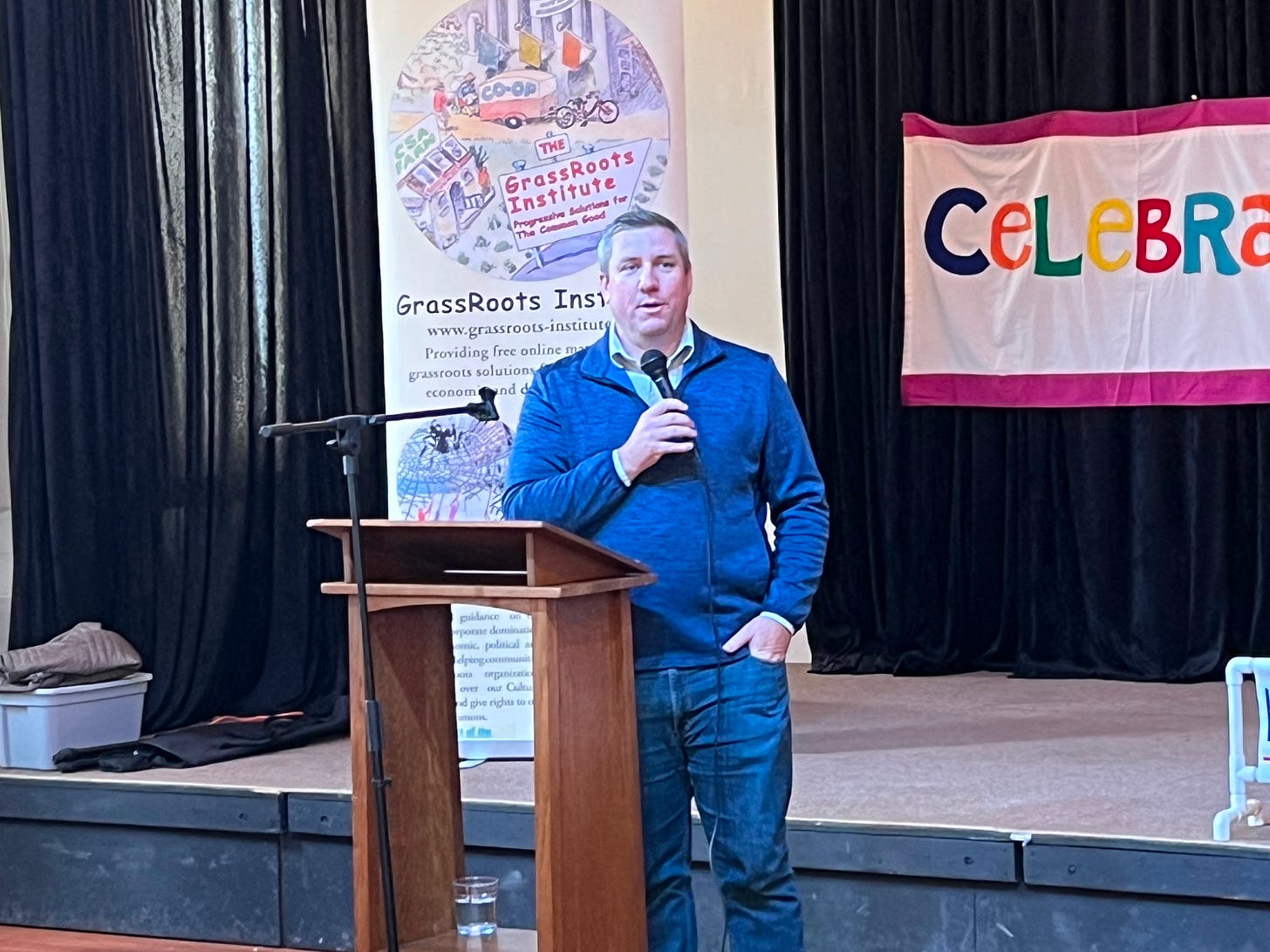Assemblymember Rogers Confident State Funds Will Cover Hopland Utility Costs After Veto
Says $1.5 million currently allocated to Caltrans can be reallocated to Hopland PUD or to Mendocino County
It’s an unfair burden that’s well known to state legislators who represent rural districts in California. When a Caltrans project affects water or sewer lines, it’s the responsibility of the local water district to pay to move the lines — whether the move is temporary or permanent, and regardless of whether the project delivers any benefit to the utility itself.
That requirement recently was cited to justify a 40% rate increase for customers of the Hopland Public Utility District — an increase that takes effect Nov. 1 and that one out of three ratepayers oppose. The small district, which serves about 330 customers, was told it would have to contribute more than a million dollars to cover the cost of relocating underground utilities as part of a Caltrans Americans with Disabilities Act project through downtown Hopland. (Mark Hildebrand, a consultant for the Ukiah Valley Water Authority, pegged the amount attributable to Hopland PUD ratepayers at $5 million. Ratepayers said the estimate was exaggerated and pointed to the lack of standard estimates)
Assemblymember Chris Rogers, who represents Mendocino County and the North Coast, said the situation in Hopland highlights how state law can penalize struggling rural communities.
“I think that this is a really good example of one of the areas where one-size-fits-all approaches to policy are a challenge across California, but specifically in our district being as large as it is,” he said. Rogers represents California’s 2nd Assembly District, which stretches from the Oregon border to northern Sonoma County and includes Del Norte, Humboldt, Trinity, Mendocino, and part of Sonoma County.
Roger explained that current state law limits what Caltrans can fund in a project. “There are certain parts of projects that Caltrans is able to actually fund and parts that they are not,” he said. “And there is a portion as it pertains to the projects that they are doing in Hopland — specifically the relocation of the utilities that is associated with the ADA work — that state law does not allow Caltrans to actually do.”
The result, Rogers said, was that Caltrans “basically had to split the project into two components. Phase one is the section they are able to actually fund and do the work for. Phase two is the section they are not able to do the work for, and that falls on the public utility district.”
For Hopland, that meant the costs of the state-mandated project would fall on roughly 330 ratepayers. “The fact that they are having the secondary aspect of this project that isn’t even their project but it’s a Caltrans project fall on so few people at such a high cost — it really would be a challenge for that district,” Rogers said.
Rogers estimated the Hopland portion of the project at “about $1 to about $2 million depending on materials, labor, and especially depending on how long it actually takes for this project to get off the ground.”
To address the issue, Rogers introduced a bill earlier this year that would have allowed Caltrans to cover the cost of utility relocations for small districts like Hopland. “We also worked very closely with Senator McGuire’s office and made sure that we secured some funding that was directly earmarked for this project in the state’s budget,” he said. About $1.5 million was allocated to the Hopland project.
While Gov. Gavin Newsom vetoed the bill that would have allowed Caltrans to fund the Hopland project, Rogers said he remains confident the allocated funding will still reach Hopland. “The governor was very concerned about the precedent that it would set for other public utility districts or community service districts across the state,” Rogers said. “But because we have that funding still secured, there still is going to be the ability for the second portion of this project to move forward. We just have to make sure that the money gets allocated that originally was designed to be allocated to Caltrans for the project.”
“The workaround is going to be that it’ll be reallocated to the public utility district or to the county to actually be the impletor of the project,” Rogers said.
He said the commitment from both the legislature and the governor remains strong. “The project will still get done,” he said. “We just need to make sure that we, you know, dot the tees, cross the eyes to make sure that it all works correctly, but that commitment does remain.”
Rogers said he was especially proud that the legislation drew bipartisan support. “It was a bipartisan bill and in fact when we sent the final version to the governor I even had a member of the Republican Party who represents a rural community stand up and speak in support of it on the floor,” he said.
He also credited local officials for their work. “We were very happy to work on the bill. We worked very closely with Supervisor Madeline Cline. She’s been nothing but the biggest champion,” Rogers said. “We talked with the former supervisor Glenn McGourty about it and he’s been a huge champion. And then obviously the work that Senator McGuire has done to be able to help secure that funding just can’t be understated.”
Read additional Mendo Local stories on this issue:
Hopland Public Utility District Board Limits Public Comment, Votes to Triple Water Rates



